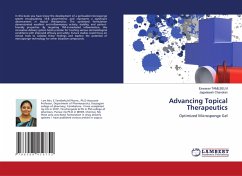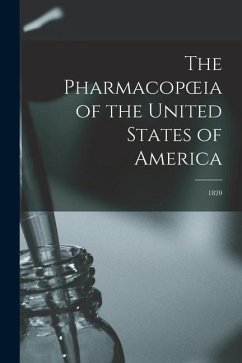
Proanthocyanidin against convulsion and cognitive impairment
Effects of proanthocyanidin against seizure, cognitive-impairment, and convulsion-induced neuro-oxidative Stress
Versandkostenfrei!
Versandfertig in 6-10 Tagen
56,99 €
inkl. MwSt.

PAYBACK Punkte
28 °P sammeln!
Convulsive status epilepticus is arguably one of the most debilitating neurological disorder, characterized by prolong episode of seizures. It is worthy of note that brain diseases pose the largest health, economic, and social capital burden worldwide of any disease group. This study has explored the potential effects of proanthocyanidin rich fraction (PRF) obtained from grape seed on the central nervous system particularly in convulsive status epilepticus (CSE) model. In this study, a significant brain and hippocampus atrophy, increased malondialdehyde concentration, increased hippocampus gli...
Convulsive status epilepticus is arguably one of the most debilitating neurological disorder, characterized by prolong episode of seizures. It is worthy of note that brain diseases pose the largest health, economic, and social capital burden worldwide of any disease group. This study has explored the potential effects of proanthocyanidin rich fraction (PRF) obtained from grape seed on the central nervous system particularly in convulsive status epilepticus (CSE) model. In this study, a significant brain and hippocampus atrophy, increased malondialdehyde concentration, increased hippocampus glial cells and granule count, exacerbated activities of acetylcholinesterase and increased indices of neuroinflammation following CSE induction are consistent with the hippocampus-dependent memory impairment observed observed among the convulsed mice. However, most of these aberrations including alteration of cholinergic neurotransmitters, astrogliosis, hippocampus toxicity, neuroinflammation,and neuronal necrosis were ameliorated following PRF treatment, a result similar to what was obtainable in the group treated with a standard drug, diazepam.






![The Chemist and Druggist [electronic Resource]; Vol. 32 (28 Jan. 1888) Cover The Chemist and Druggist [electronic Resource]; Vol. 32 (28 Jan. 1888)](https://bilder.buecher.de/produkte/65/65492/65492362n.jpg)

![The Chemist and Druggist [electronic Resource]; Vol. 93, no. 12 = no. 2121 (18 Sept. 1920) Cover The Chemist and Druggist [electronic Resource]; Vol. 93, no. 12 = no. 2121 (18 Sept. 1920)](https://bilder.buecher.de/produkte/66/66140/66140791n.jpg)
![The Chemist and Druggist [electronic Resource]; Vol. 51, no. 9 (28 Aug. 1897) Cover The Chemist and Druggist [electronic Resource]; Vol. 51, no. 9 (28 Aug. 1897)](https://bilder.buecher.de/produkte/66/66166/66166638n.jpg)
![The Chemist and Druggist [electronic Resource]; Vol. 37 (29 Nov. 1890) Cover The Chemist and Druggist [electronic Resource]; Vol. 37 (29 Nov. 1890)](https://bilder.buecher.de/produkte/65/65495/65495861n.jpg)

![Proceedings of the North Carolina Pharmaceutical Association ... Annual Meeting [serial]; v.8 (1887) Cover Proceedings of the North Carolina Pharmaceutical Association ... Annual Meeting [serial]; v.8 (1887)](https://bilder.buecher.de/produkte/66/66147/66147338n.jpg)